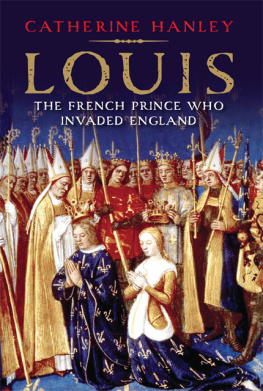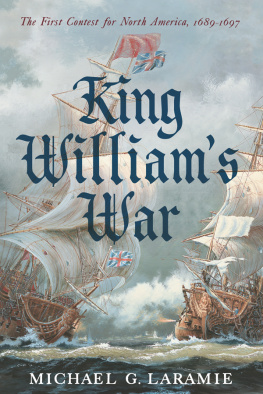To Jenny
Jacket illustrations: Front: Bataille de la Rochelle, 1372. From Froissarts Chronicle. (Courtesy of the Bibliothque Nationale de France); Back: Rye Landgate. (Courtesy of DeFacto under Creative Commons 4.0)
First published 2019
Amberley Publishing
The Hill, Stroud
Gloucestershire, GL5 4EP
www.amberley-books.com
Copyright Duncan Cameron, 2019
The right of Duncan Cameron to be identified as the Author of this work has been asserted in accordance with the Copyrights, Designs and Patents Act 1988.
ISBN 9781445690247 (HARDBACK)
ISBN 9781445690254 (eBOOK)
All rights reserved. No part of this book may be reprinted or reproduced or utilised in any form or by any electronic, mechanical or other means, now known or hereafter invented, including photocopying and recording, or in any information storage or retrieval system, without the permission in writing from the Publishers.
British Library Cataloguing in Publication Data.
A catalogue record for this book is available from the British Library.
Typesetting by Aura Technology and Software Services, India.
Printed in the UK.
CONTENTS
PREFACE
It is May 1338, and Plymouth Sound is filling up with English ships coming in from the dangerous waters of the English Channel. Small fishing boats, merchant vessels trading with South West France, cargo vessels, coastal traders every boat that can make it is heading for safety. It is an excellent refuge. The outer harbour is wide and spacious, indented with many useful hiding places, and further into the harbour is Plymouth itself. The small walled town defended by one small fortress to the west of what is now known as Sutton Pool is well hidden away from marauders.
A French-led fleet of Genoese and Monegasque warships appeared along the coasts of Devon and Cornwall a few days earlier and the entire South Western Peninsula is now lying open to the French-led invaders.
Devon and Cornwall had many small harbours full of ships, and the busy coastal trade made it good raiding territory. The galleys, long slender and low, mostly from Genoa or Monaco, made up the attack front, and the cogs, big fat converted merchant vessels used for the storage of loot and transportation, were engaged in low-risk freebooting all along this coastline. Plunder was an important part of any campaign that involved the Genoese or the Monegasques, paid allies of the King of France. Plunder rewarded the mercenary crews for the risks they were taking in making their skills available to their employer.
Again and again the same routine approach a likely ship on the high seas, grapple with hooks, board, throw the crew overboard to their deaths, take everything of value, set the ship alight and move on to the next one. If the ship was large or valuable enough, it might itself be captured and sailed back to a friendly port on the other side of the English Channel.
In the summer of 1338 King Edward III had spies in France who had passed the word that the French were planning an invasion of England. Kent, Sussex and Hampshire were ready, with keen-eyed sea watchers ranged all the way from Sandwich to the Isle of Wight and beyond, to pass on warnings and light beacons and if necessary, descend on the French landing places. But beyond Dorset the local people were still unprepared and the galleys started to do what they were best at doing.
By now someone surely would have spotted the fleet making for Plymouth once it appeared over the horizon. As the maximum speed for the Genoese and Monegasque galleys over a distance was not more than a fast walking pace, the citizens should have had plenty of time to mount a defence. But none of the chroniclers mention any attempt to stop the incursion when it started.
Perhaps the sight of the warships approaching Plymouth Sound slowly yet relentlessly was so terrifying that the people who had been appointed to mount a defence ran away. The fleet was supposed to be frightening and various forms of display were used to heighten the effect. Unlike twenty-first-century warfare, the fourteenth-century military believed in dressing up for battle. The French fleet and crew would have been arrayed in their finest gear, and the ships brightly painted. The blue royal standard of France with gold fleurs-de-lis was sewn into the sails of the French ships. The red-and-white lozenges of Monaco identified the Monegasque ships and, a little confusingly, the Saint Georges cross of Genoa, so similar to the English cross, was also visible. The masts were flying pennants, identifying each high-status aristocratic leader on each ship. The message was underlined by the shields lining the gunwales, each emblazoned with its owners coat of arms. The rear of each galley was covered in a tent in matching colours and designs to the flags and shields, in order to shield each commander and his inner circle from view.
The decks were crammed with fighting men, tightly packed together. The high status warriors, those with iron helmets or breastplates, burnished their armour so that it gleamed in the sun. The new style high-status armour encased the whole body in steel, and exaggerated the breadth of the shoulders and the thickness of the legs. When the visor of the bascinet was closed for battle, covering the face completely, the pointed, pig-like shape of the face with two small slitty eyes gave an animalistic appearance to the leaders. Some of the galleys were plated in copper, polished until it shone and reflected light onto the waves. As they got nearer to the entrance of the harbour, the noise added to the effect. Brass trumpets blown on the approach were designed to terrify, while also carrying commands to the fleet. All aspects of design were coordinated with the well-timed set of manoeuvres that added to the sense of menace felt by the people on the shore.
The attackers shouted battle cries such as Montjoie Saint Denis! This was an ancient slogan going back to the early days of the French people, redolent of past feats of daring in the Holy Land, instilling fear into the hearts of the foe, and strength and courage in the hearts of the invaders.
The Genoese and the Monaco warriors were marines, able to handle their galleys at sea whether rowing or sailing. And as soon as the galley landed the same men leaped out onto land, sword in hand, ready for action and eager to switch into fighting mode. The French-crewed cogs acted as support vessels and were safely waiting outside harbour, ready to store loot. Sailing vessels of the period were unhandy and had difficulty making way unless there was a wind in the right direction, so they were always liable to be trapped in port if the wind changed. The advantage of the galley was that the banks of rowers made them independent of the vagaries of the weather. They can be described as precision attack vessels.
The real prize in Plymouth harbour was the seven merchant vessels from Bristol with high-value cargoes. The Genoese descended on them, disposed of the crew overboard, then transferred the cargoes into the merchant cogs, and burnt the ships. Plymouth harbour was starting to fill up with bodies and burnt timbers.
***
Hugh Courtenay was the highest ranking local dignitary and was responsible for maintaining the defence force. Yet he had not carried out his obligation of summoning the militias that he himself led. Maybe the keepers of the coastal lands in Devon and Cornwall thought that the isolation and relative poverty of their part of England, compared to the territory further east, meant that they would not be bothered by the French raiders. If the coastal defenders further east in Kent and Sussex had not been so well prepared, the population of Devon and Cornwall could well have been left in peace.












